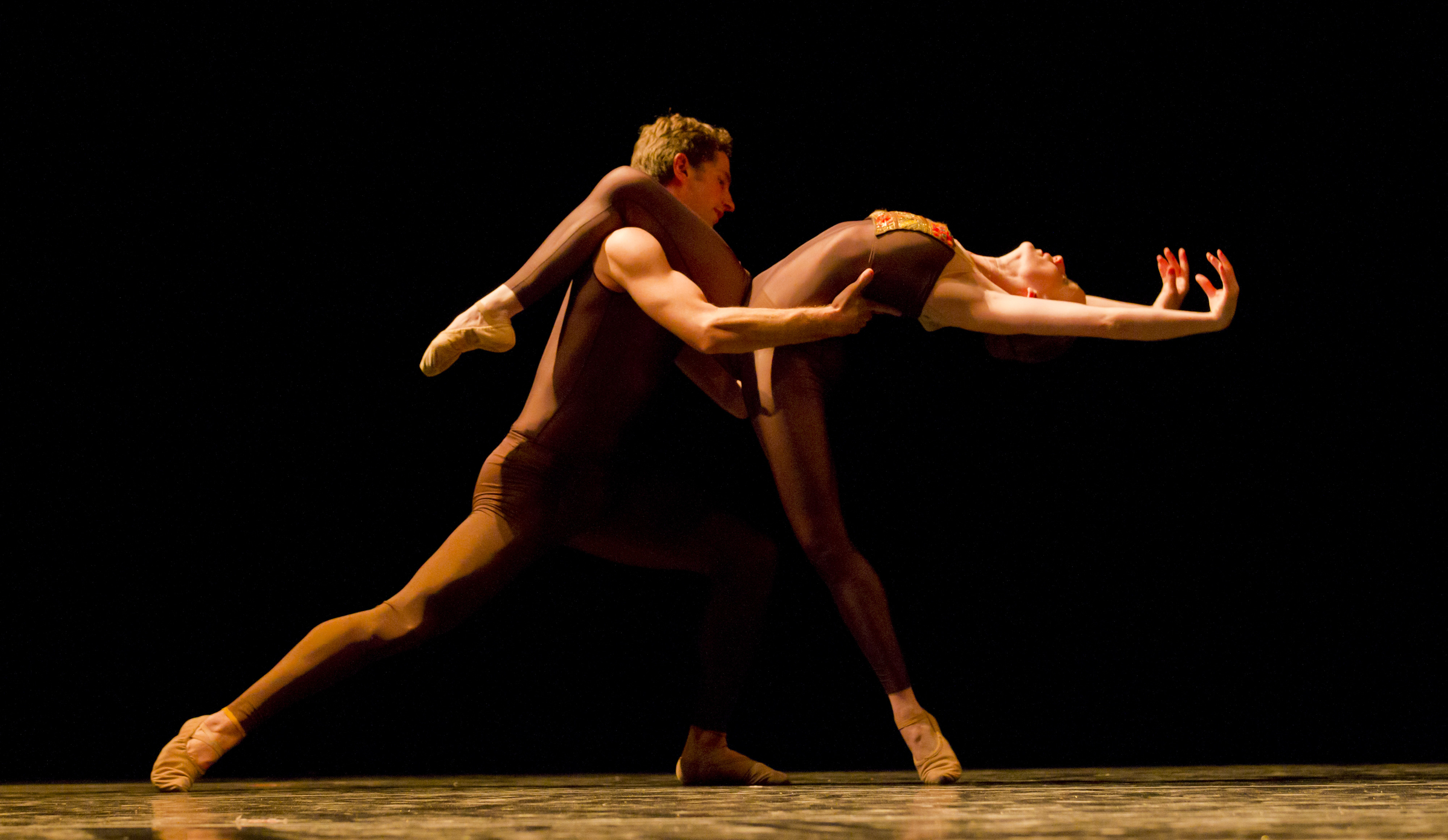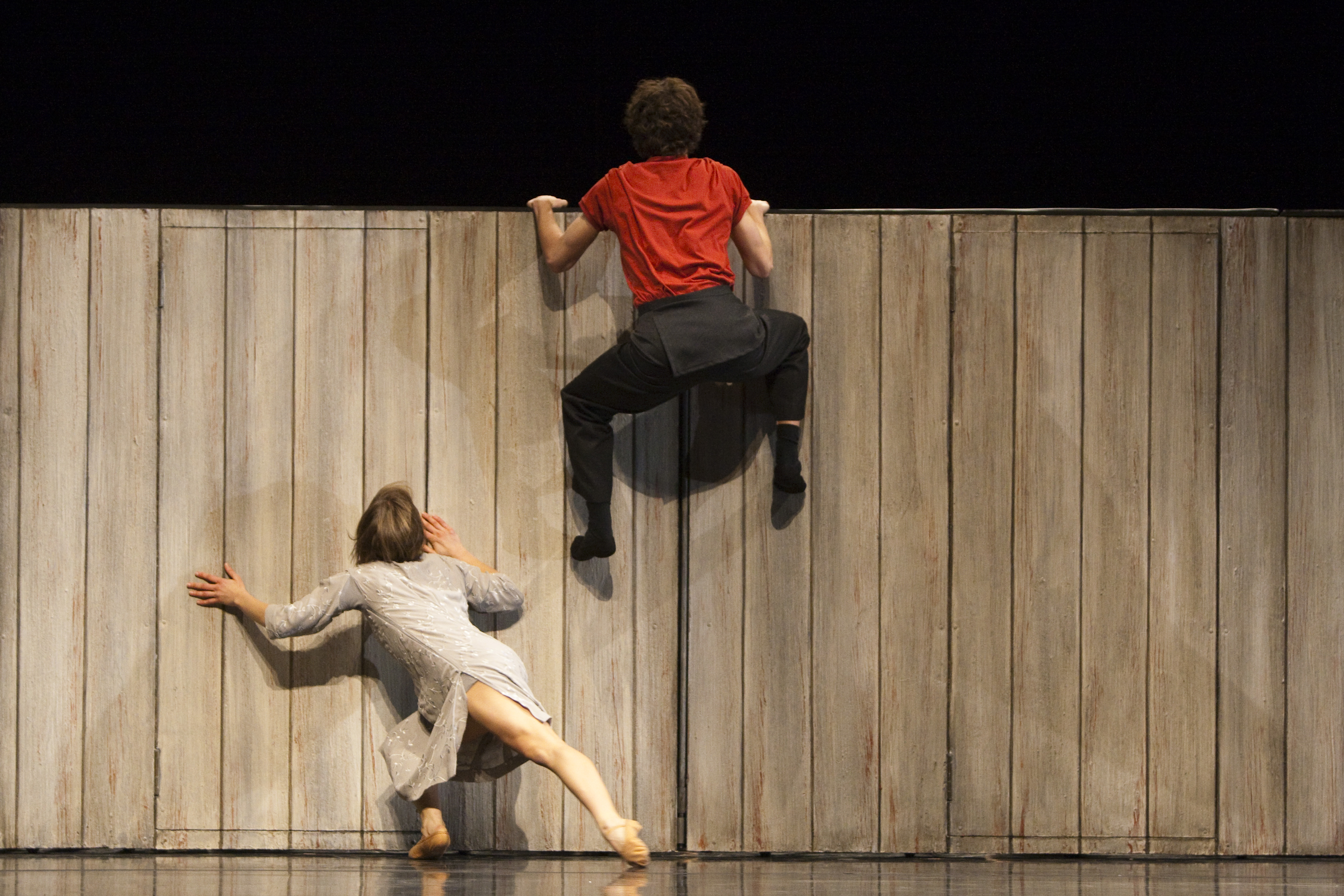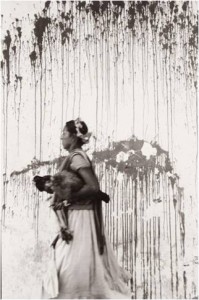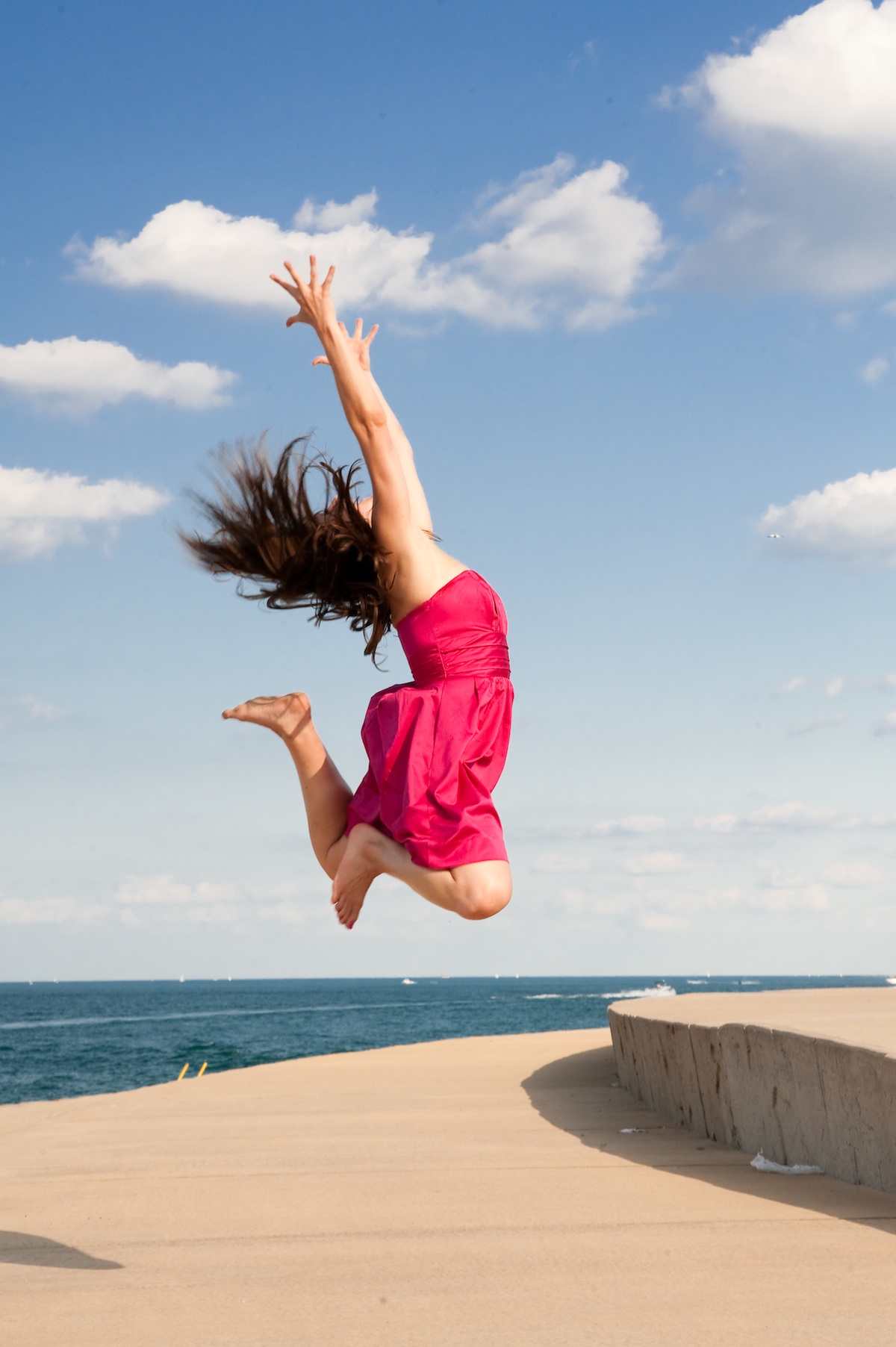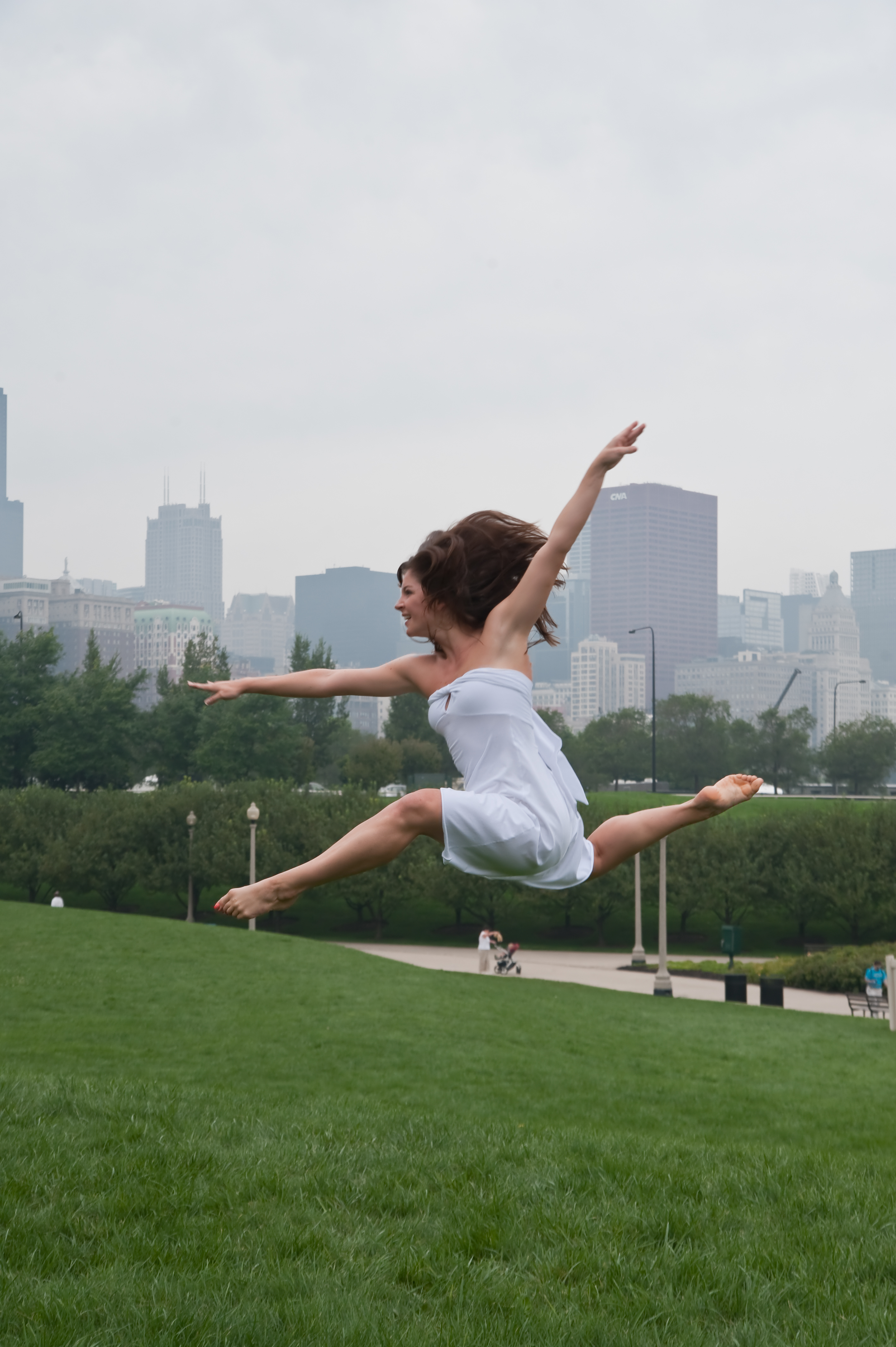Post modern guru David Gordon has a way with words. He uses them as a structure, a starting point, an inspiration and then turns them into a complex living creative act right before your eyes on the stage. So it is with his Pick Up Performance Co(s)‘ presentation of Dancing Henry Five this weekend at The Dance Center of Columbia College. This 2004 revival is part theater, part performance art, part dance, part music collage. A deconstructed take on Shakespeare’s Henry V, it not only entertains, but offers a commentary on war that still resonates today.
The program calls it a “reduction” of Shakespeare’s work. Once in the theater, the stage shows what Gordon has reduced it down to – the bare necessities. Everything for the performance is on the stage in plain view. No wings, props strewn about the stage and performers standing around the edges waiting. Costumes of colorful, but faded rugby shirts with shorts suggest uniforms of a different kind of battle, rather than the 1415 Battle of Agincourt that they are about to partially recreate. The performers walk around the stage carrying signs with pertinent information (title, names, please turn off cell phones) passing by like the opening credits of a movie. Valda Setterfield (Gordon’s wife and former dancer with Merce Cunningham) acts as narrator and chorus moving the action along and adding sly, sometimes biting commentary – Gordon’s, not her own, she states – as well as joining in the dance. At 77, she’s still a dynamic performer with impeccable timing. (Go on with your bad self, Valda!)
Dancing Henry Five incorporates spoken word along with audio excerpts from the stage and movie versions of Henry V with musical interjections of William Walton’s score from the film. The first Shakespeare quote heard is “a kingdom for a stage” and Gordon transforms this stage into a kingdom, ocean and battlefield. At times funny, poignant, sad and moving, the one-hour production is a creative, quirky take on a classic historical poem. Shakespeare through the looking glass. Seven dancers make the action happen, most notable former American Ballet Theatre and New York City Ballet star Robert La Fosse. His trademark mole on his left cheek is barely visible through his make up, but watching him do a low quick jeté shows the technique, if not the flexibility, is still there.
As the plot takes us to war against the French, one can’t help but be reminded of more current events. “War takes minds off deficits”, says the narrator. Indeed. Originally choreographed in 2004, a year after we began the war in Iraq, the words bring a poignant pause to the audience. A quilt carried across the “water” includes an American flag, even though Columbus wouldn’t discover America for another 77 years. One image that sticks is dancers standing on sheets of material being slowly pulled across the stage like ships.
There is one performance left of this interesting post modern take on Shakespeare’s play. Tickets are still available.
Pick Up Performance Co(s) – Dancing Henry Five
The Dance Center at Columbia College, 1306 S, Michigan, 312.369.8330

